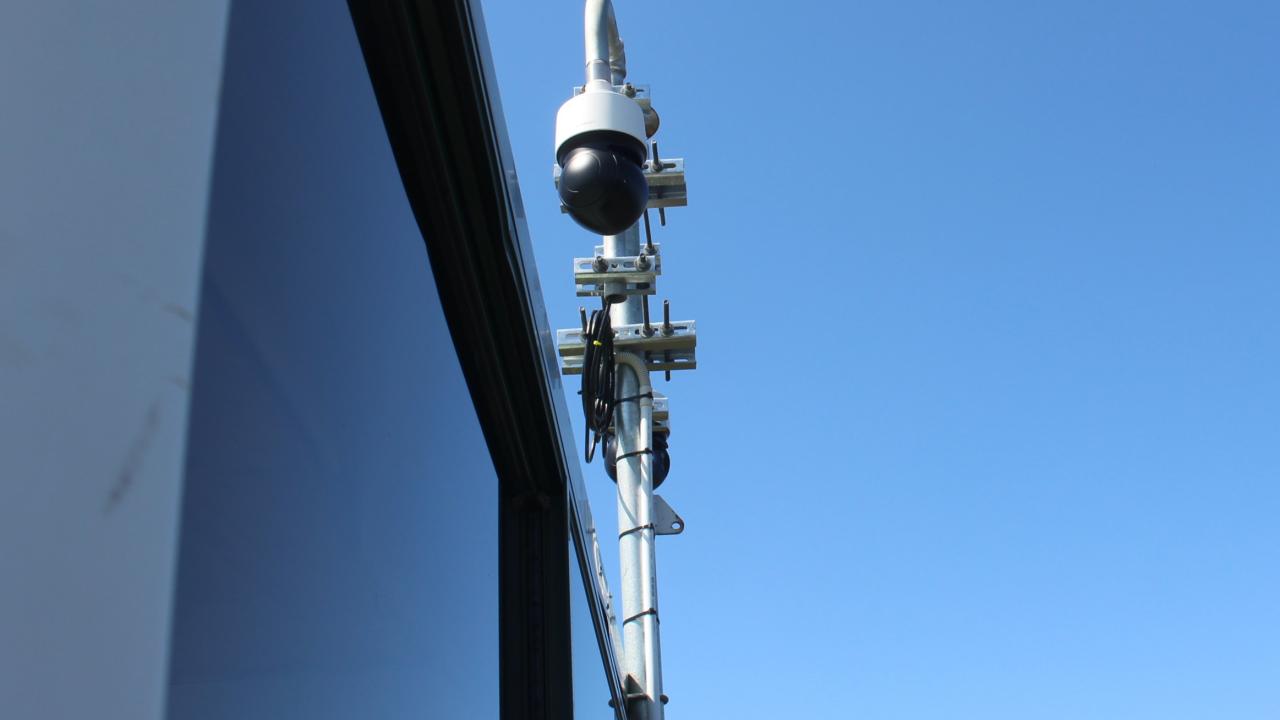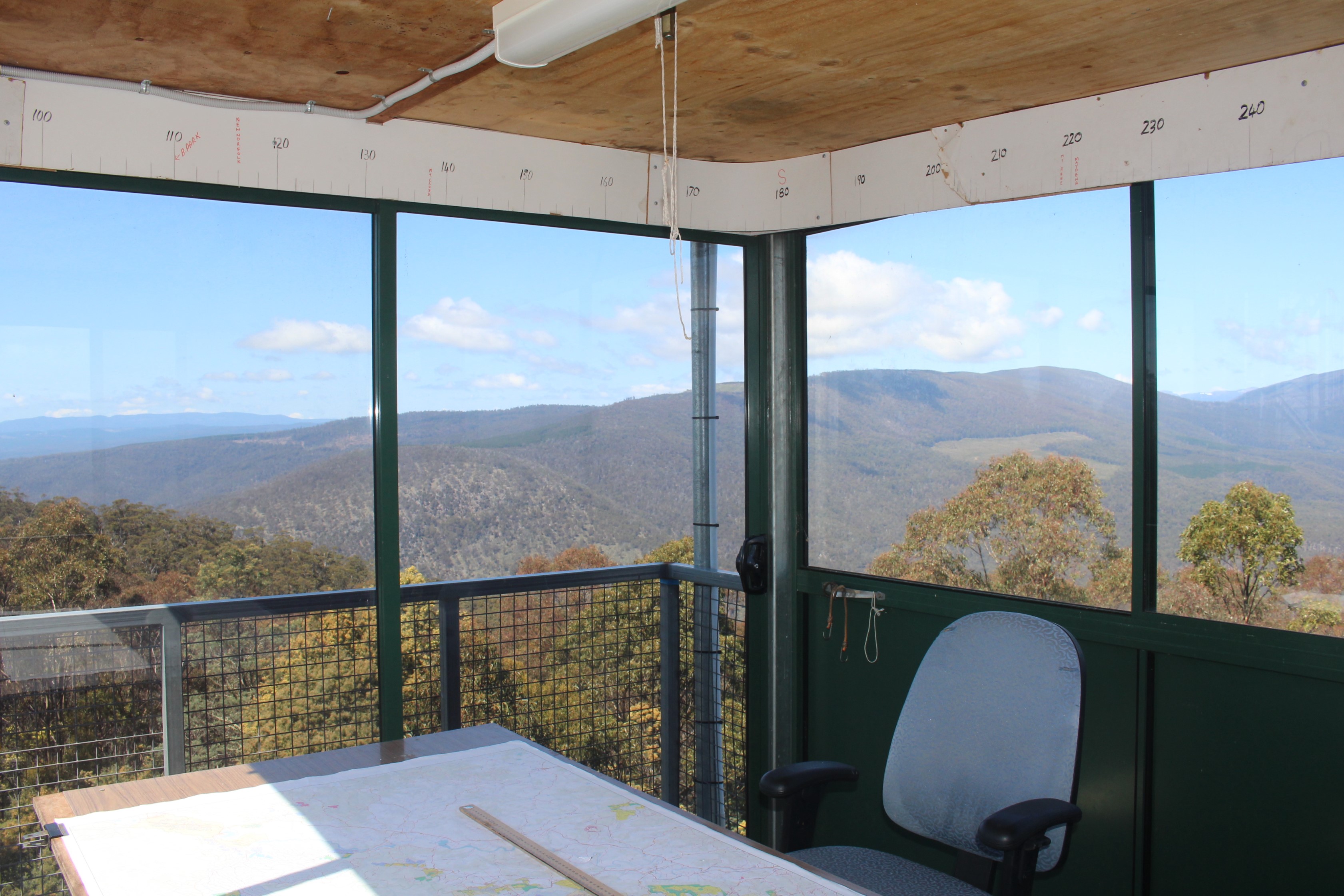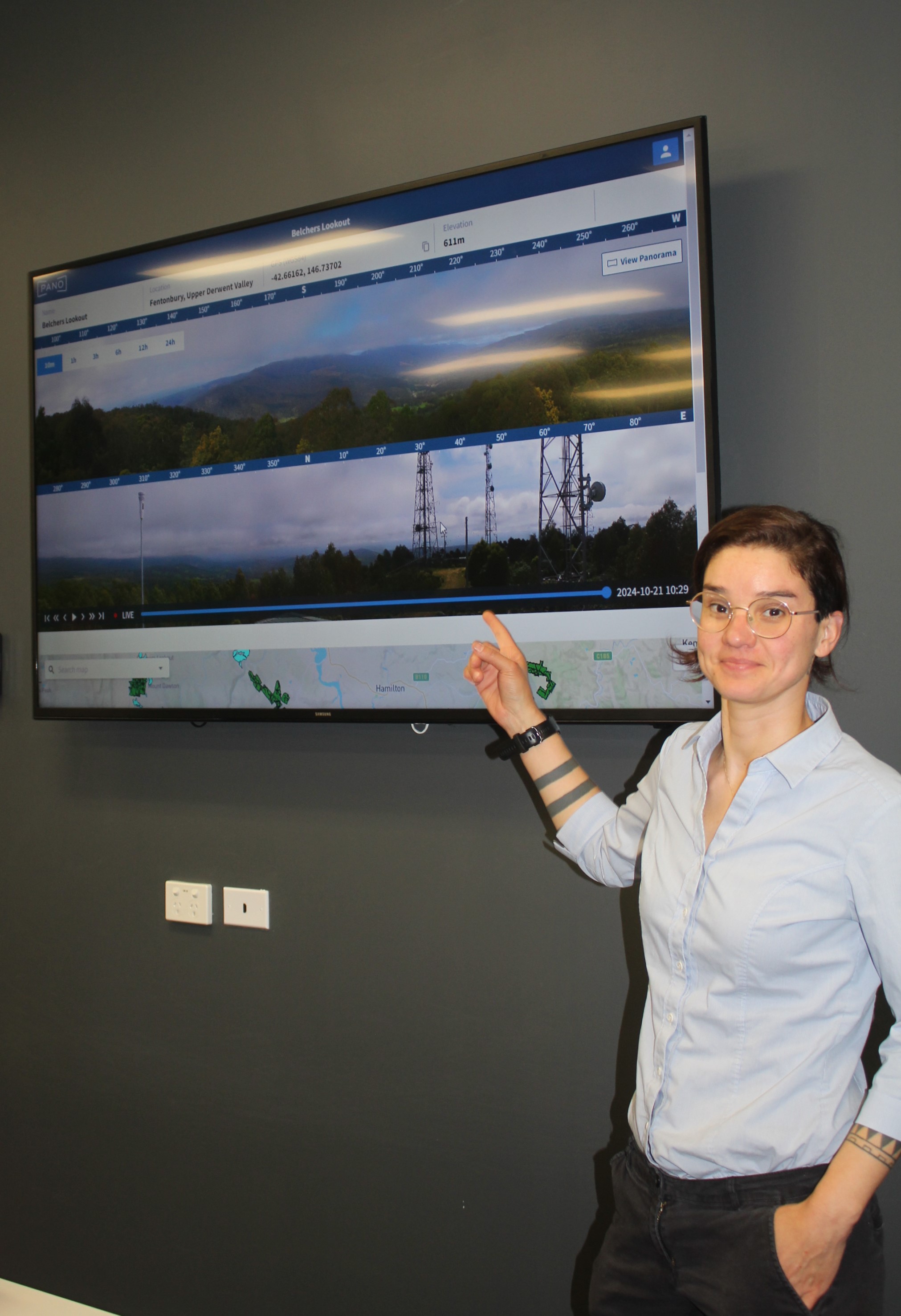AI on the lookout for fires this summer

THEY see across distances as far as 15 kilometres and beyond, utterly silent and highly effective at their assigned task. The running costs tally a few cents per hour and more, they work 24/7 without complaint.
These are the new watchers over our forests; they and their high-tech siblings now being introduced in the forests of the Derwent Valley, and across Tasmania’s massive swaths of native and plantation forest.

New Norfolk’s SFM, which manages the former Norske Skog softwood estate in southern Tasmania and which also is a leader in plantation carbon projects across the country, has so far installed two highly sophisticated Pano AI devices to keep an eye on its 26,000 hectares.
Made by a San Francisco company, the Pano AI is an automated camera that turns through 360 degrees, rendering real time vision across about 15 kilometres in every direction.
SFM’s are installed on fire towers overseeing the Derwent Valley, on Belchers Lookout, near Mt Field, and to the southwest, at Mt Lloyd.
At SFM’s New Norfolk office, a large monitor sits at the centre of the operations room, showing real-time pictures of the landscape. An optical zoom enables staff to quickly determine the scale of any fire, and if there are vehicles or humans involved.
The camera also sends electronic prompts to staff, wherever they are.
The core of this SFM operational centre is a double-row of desks, capable of accommodating about 20 staff. When the wind is blowing this summer, and the temperatures – and tensions – rise, those desks will be filled out.

“Pano AI is a fire detection system, not a management system,” points out Rafaela Ferreira, an operations forester with SFM.
Out in the forests themselves, those detection scouts are already at work.
Rafaela takes us through a large plantation, side by side sections of radiata pine and eucalypt that was planted in 2016. This one got its first pruning at about six years of age, and will get a thinning at 15, allowing bigger trees to get more light and water.
We reach the peak of the hill that is Belchers Lookout, a rough-cut clearing of a few hundred square metres that’s populated by four massive communications towers.
The fire tower is an immediately recognisable two-storey affair, with a fully glassed section at the top, the roof of which supports several smaller masts, one with the Pano AI camera.
On its surface, the task of this football-sized device is simple: Using artificial intelligence, it automatically detects the first signs of fire, determines its location and alerts firecrews as needed.
Unlike human watchers, the camera works day and night, programmed to tell the difference between smoke, clouds and agricultural dust.
MEANWHILE, over at Sustainable Timber Tasmania, the fire detection responsibility is more than 800,000 hectares, some 30 times the area of SFM’s plantations.
It’s for STT that the Cambridge company Indicium Dynamics is overseeing eight of its own AI fire detection cameras.
Called Fire Foresight, these cameras utilize advanced computer vision technology and artificial intelligence programming to detect even the faintest of fire signatures in complex terrains.
Chief Technology Officer Michael Ross says the Tasmanian company expects to install four more such devices this summer.
Close to Indicium’s headquarters is that of the Tasmania Fire Service, where fire reports from the forest managers across the state, public and private, are coordinated.
While the early minutes of a fire are critical, determining response time and ultimately, the threat to lives and property, the process to detect a fire, verify its exact location and size, and dispatch fire crews can easily take hours.
Indeed, bushfire detection in Australia has long relied on humans sitting in a fire tower like that at Belchers Lookout for hours on end, usually in the heat of summer, armed with a packed lunch and a pair of binoculars and radio.
While towers are actively occupied during fire season – broadly, spring until autumn – the new cameras are providing live coverage 365 days a year.
The human monitoring system will continue to be used, for now.
But with these new systems being installed around Tasmania, the dynamics of fire detection in the bush has been radically changed. Until this year, there was no way to automatically scan horizons for fire threat 24 hours a day.
It’s a new world out there in Tasmania and the world, but there’s something reassuring these quiet sentinels are already at work.



Add new comment